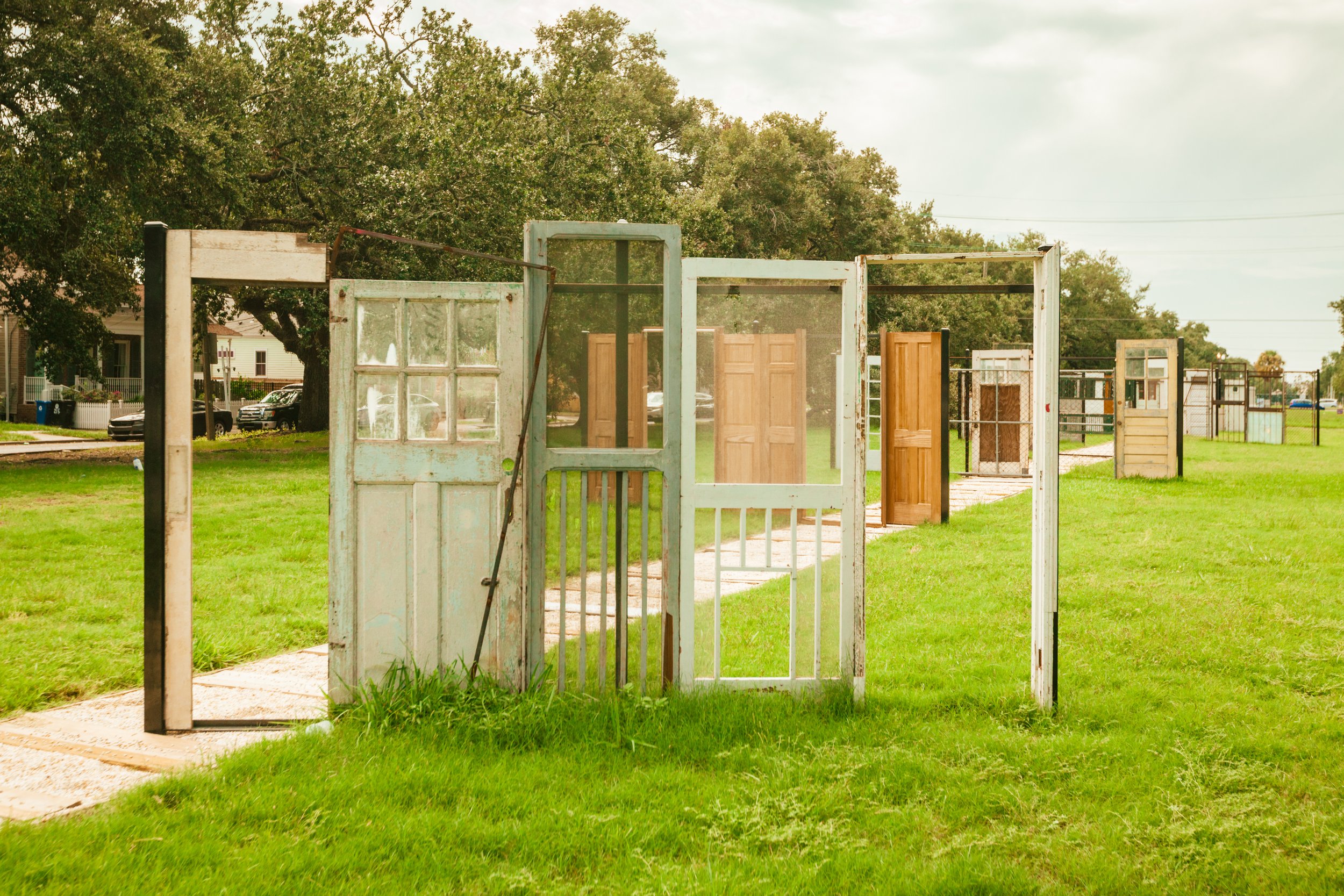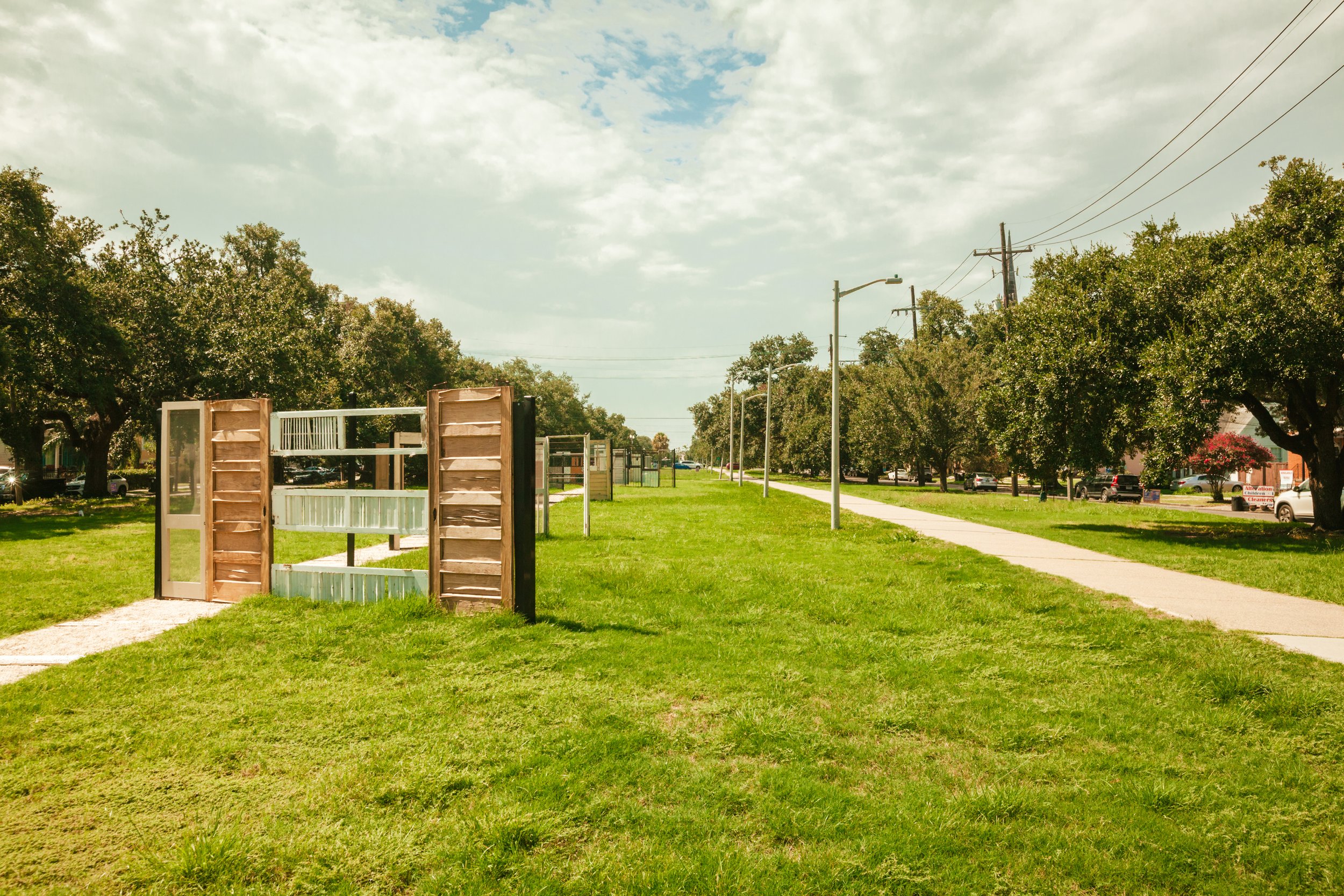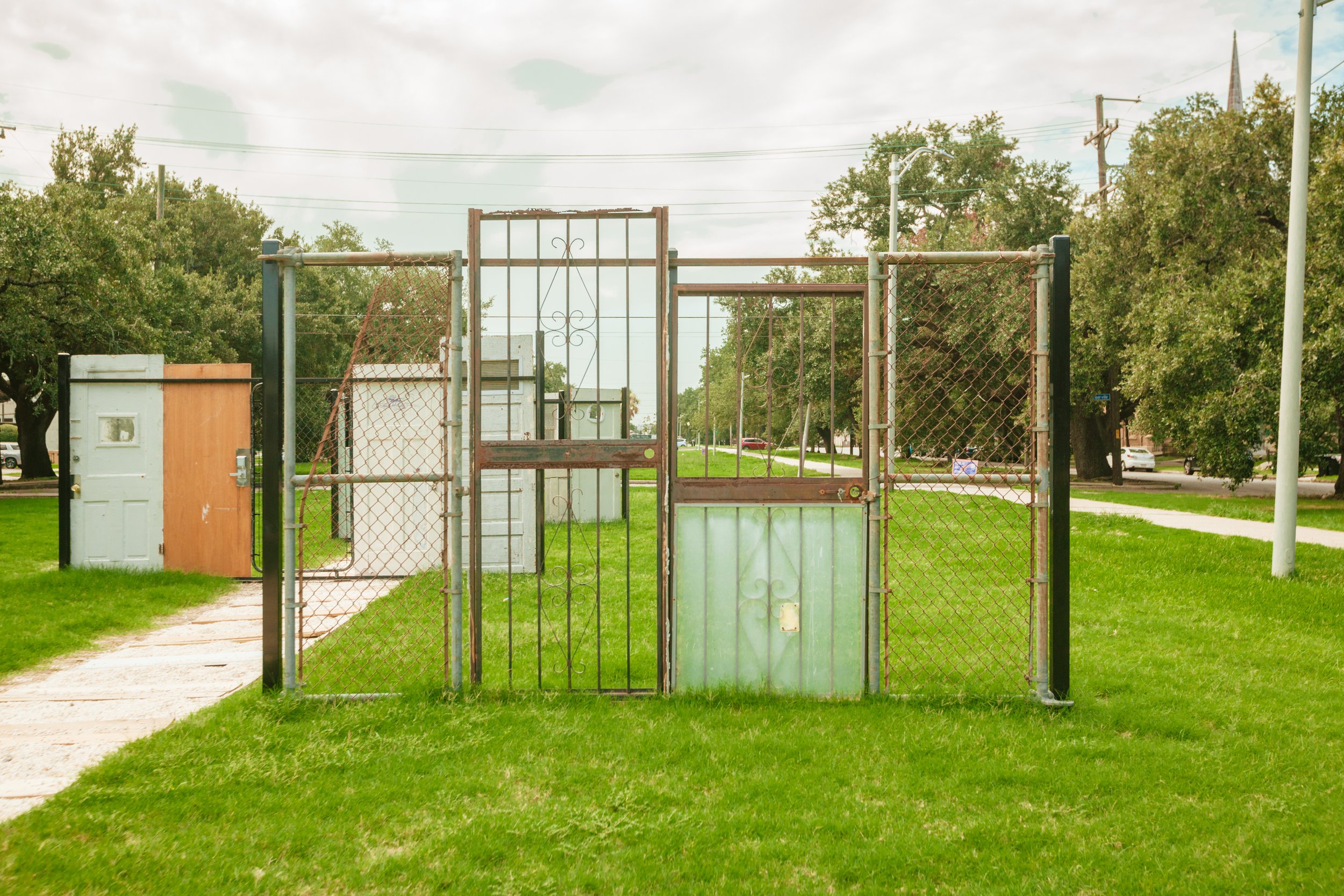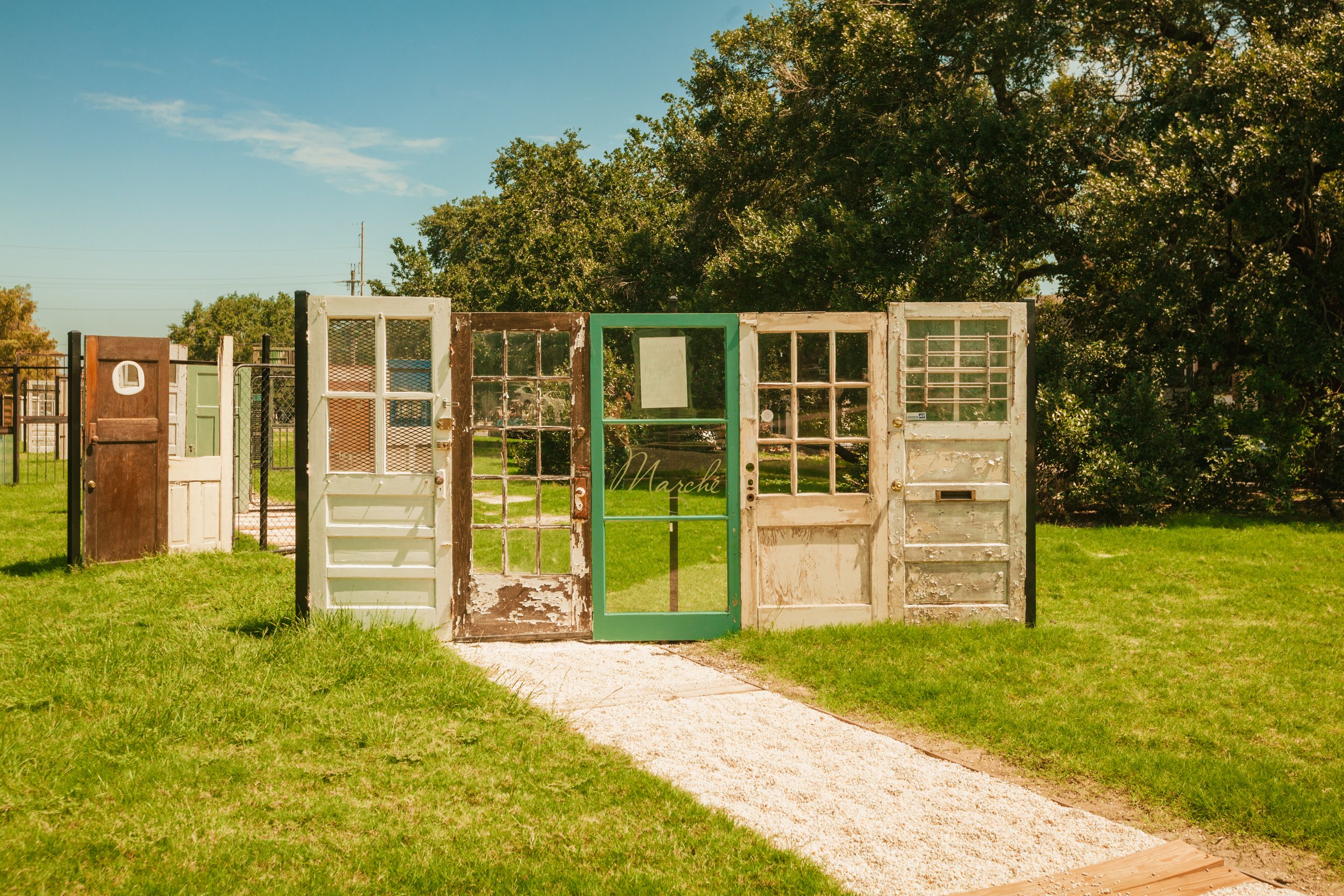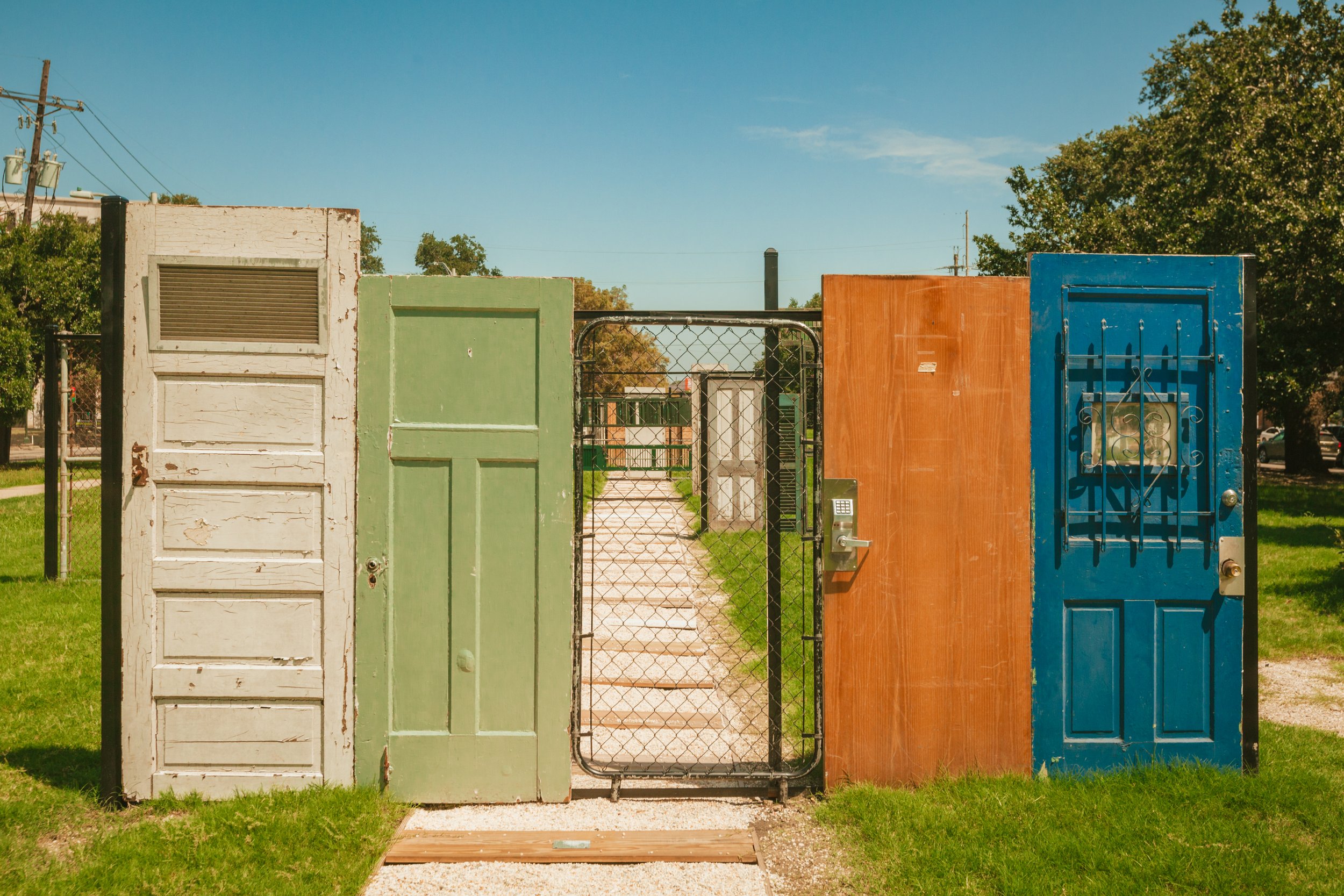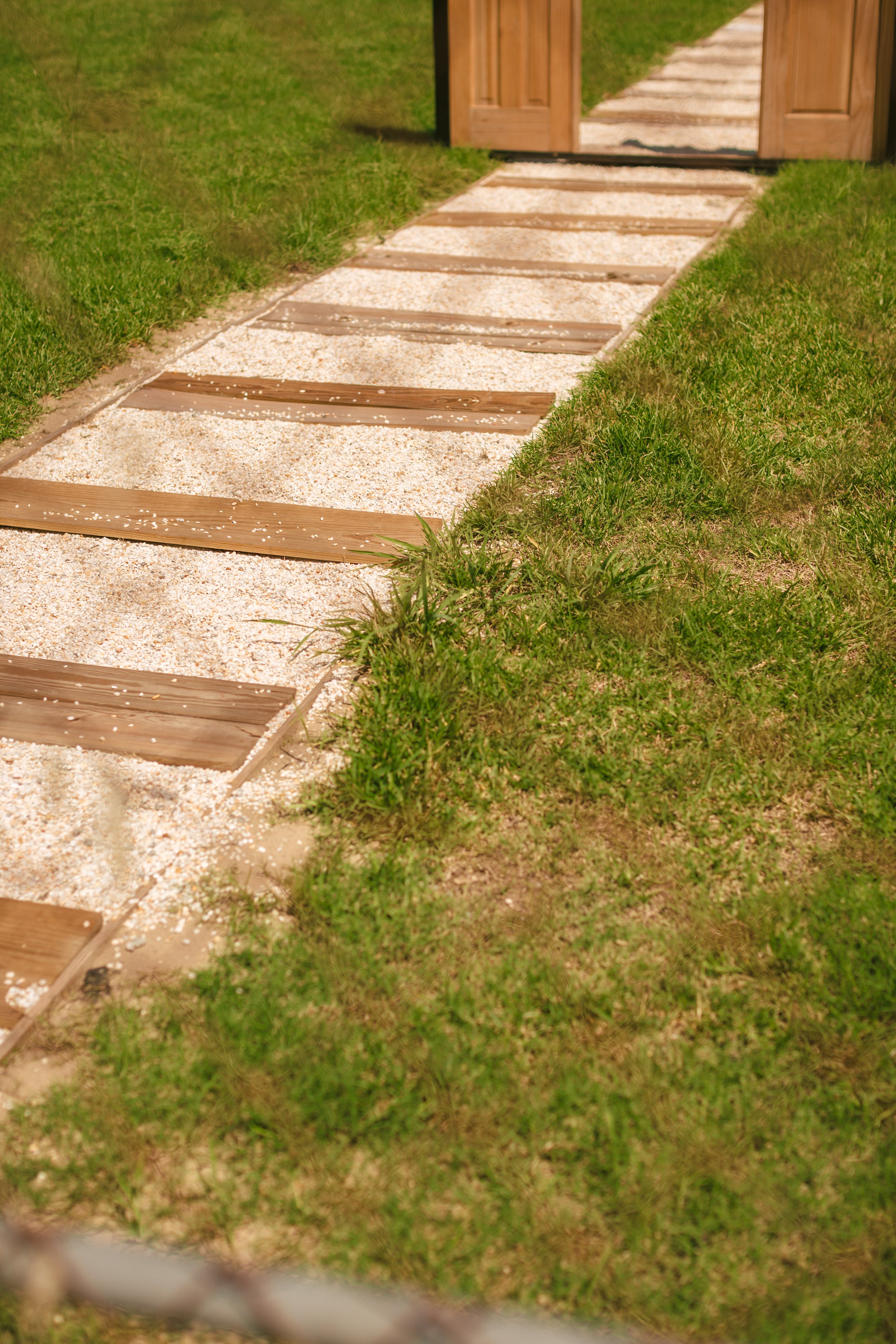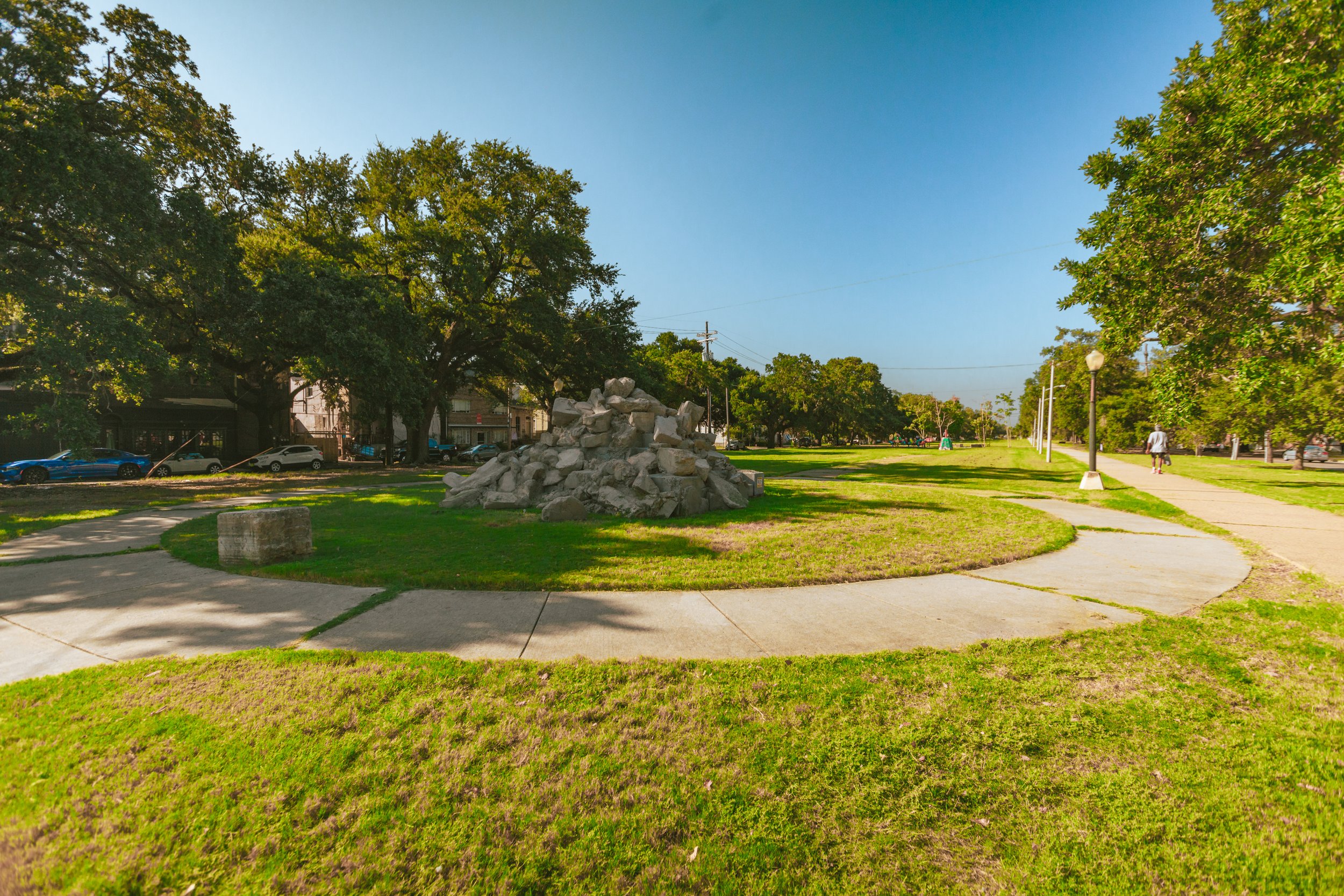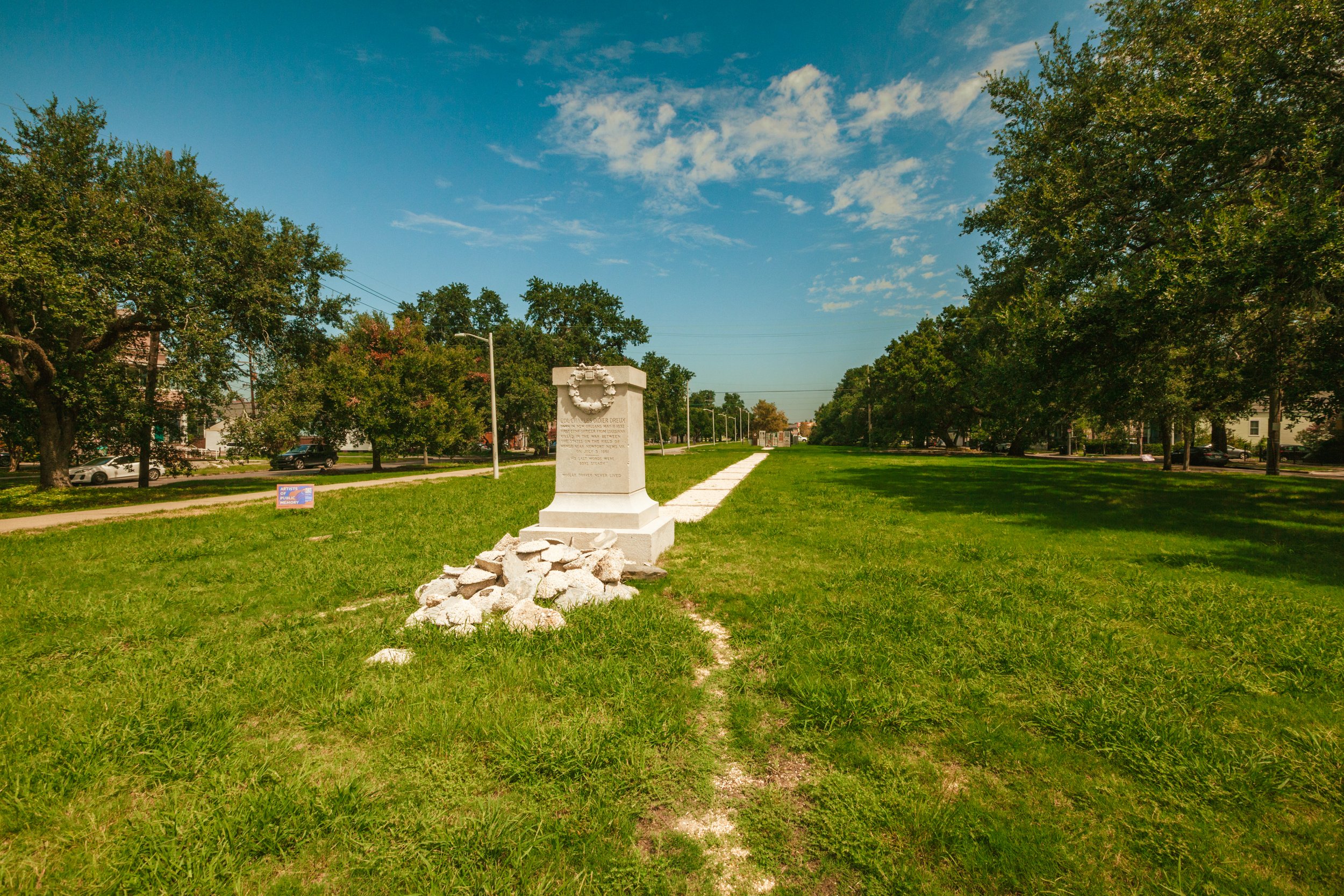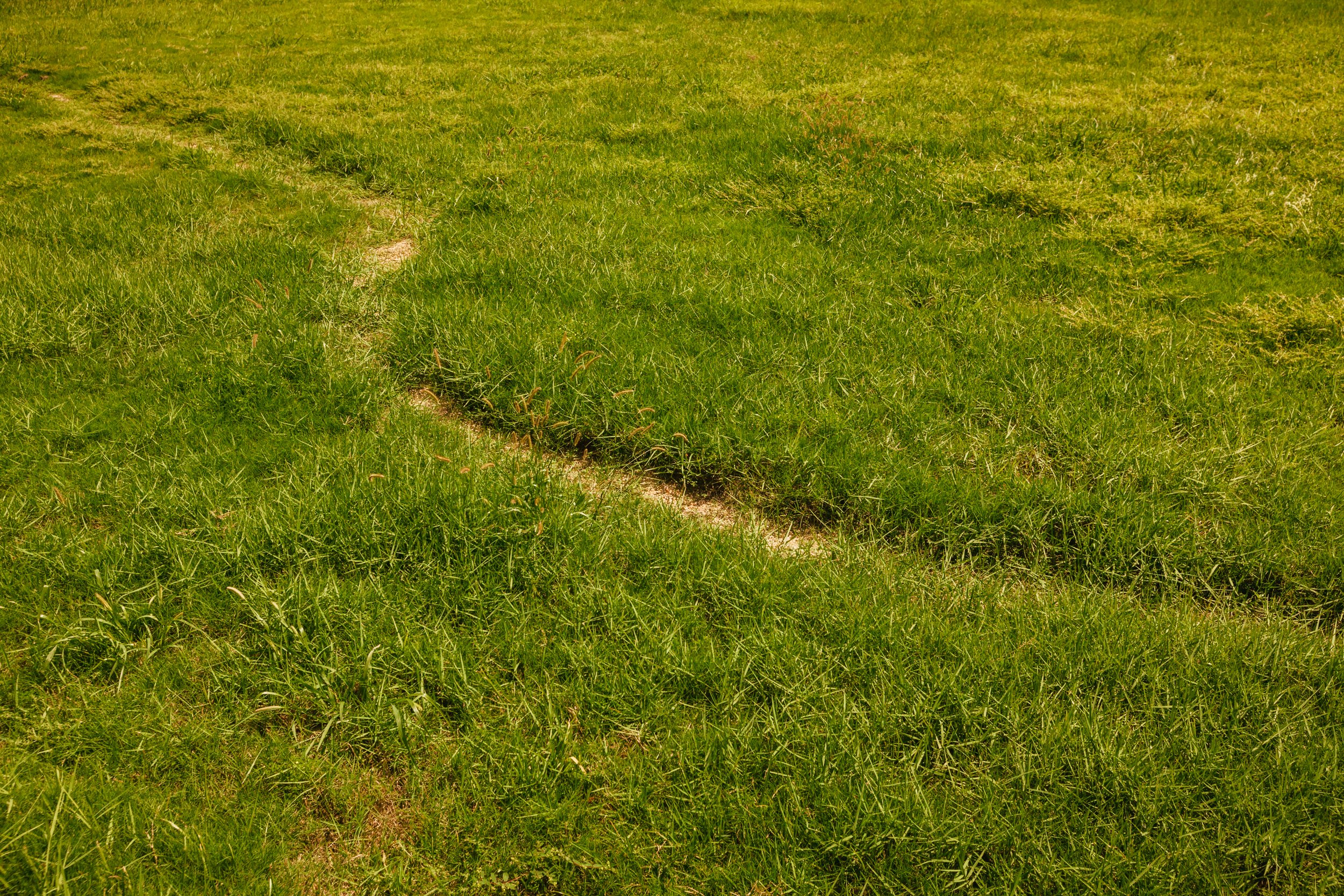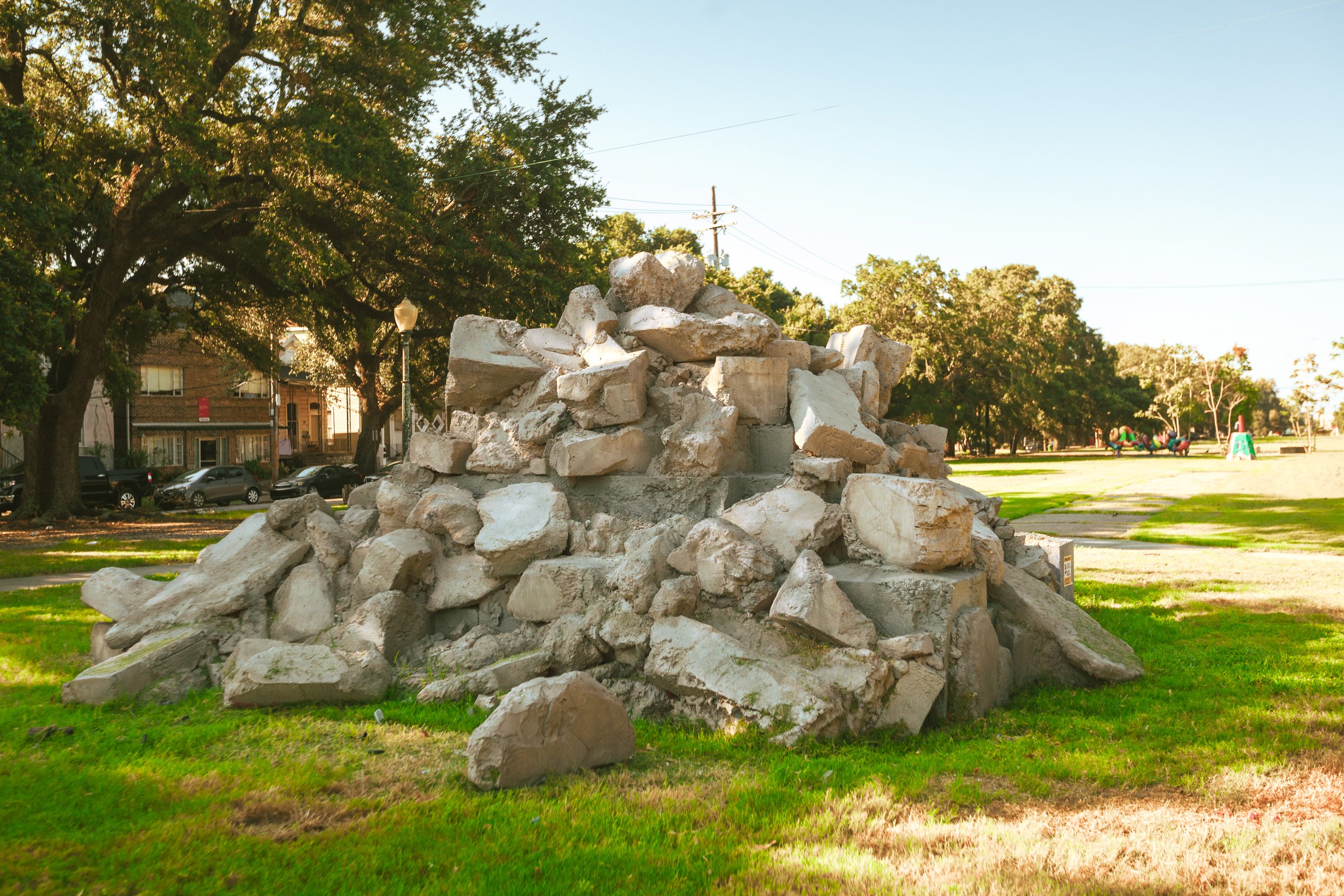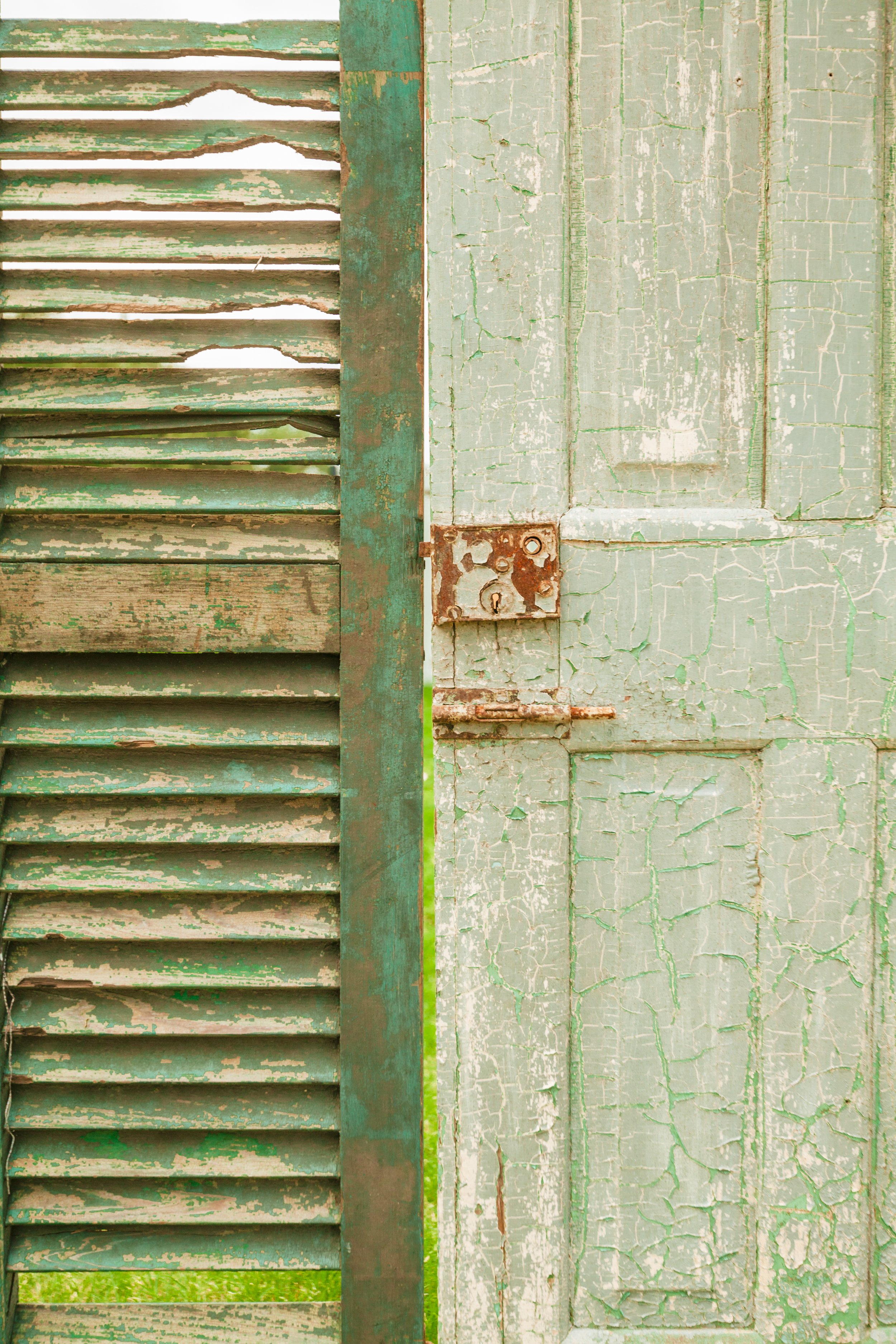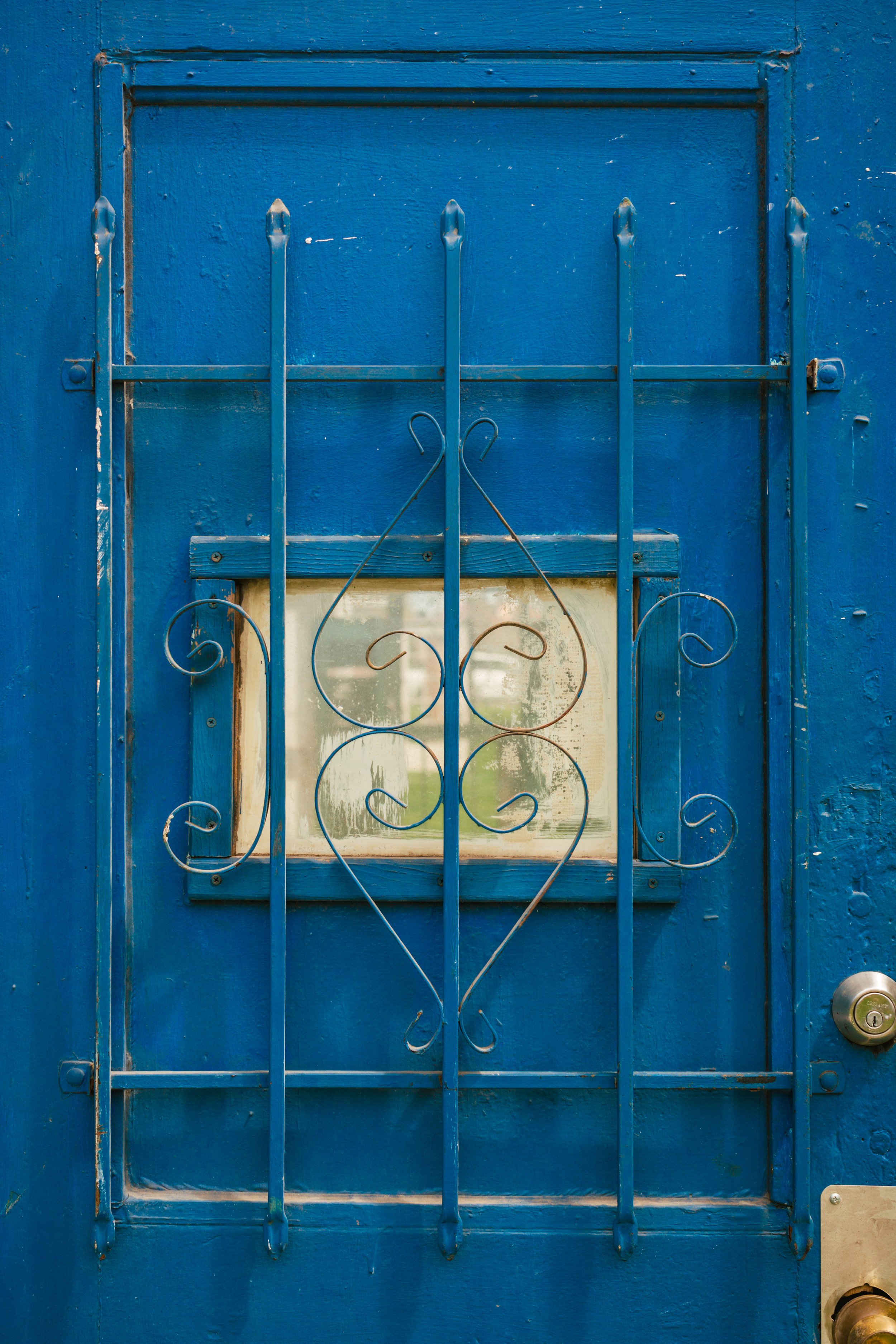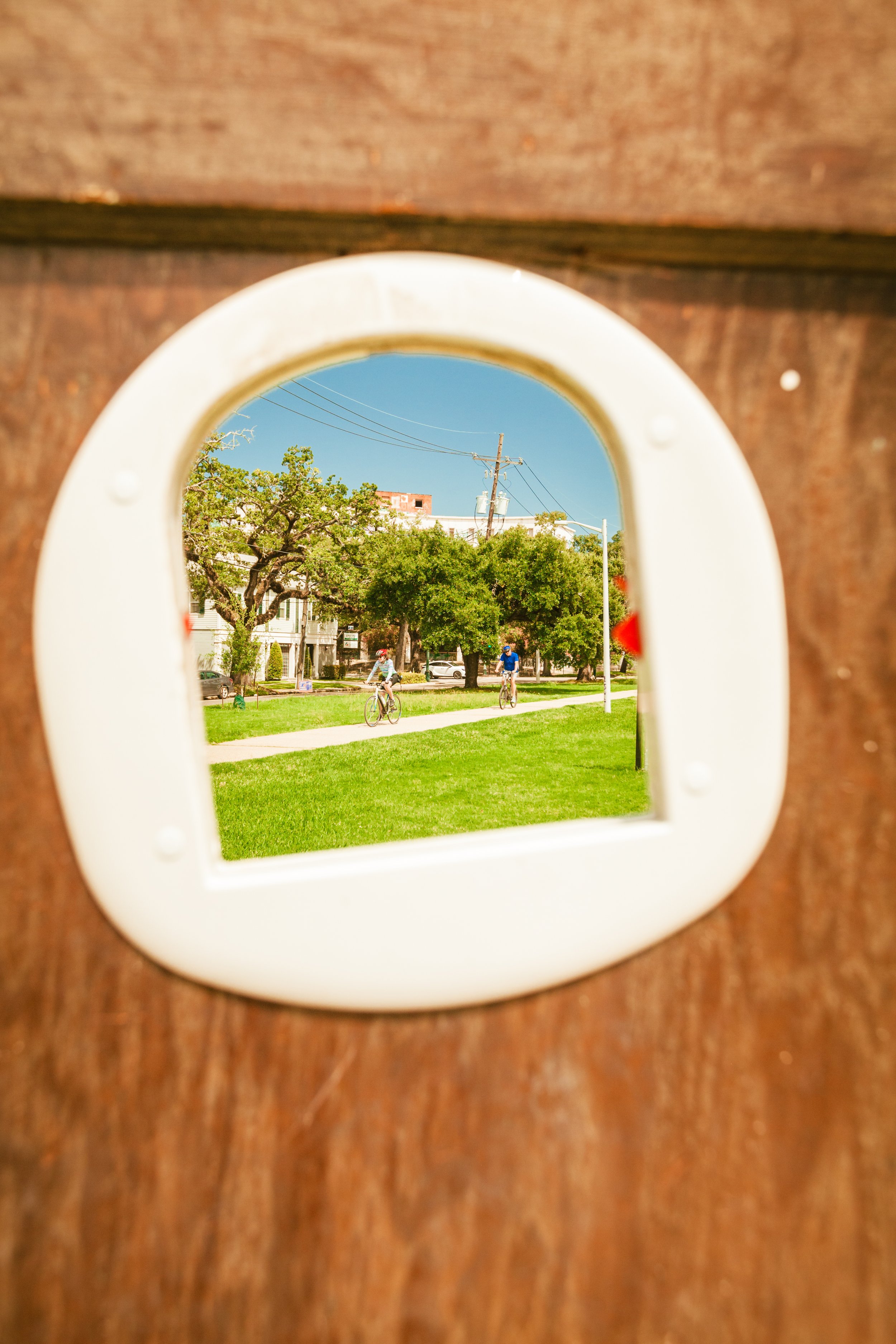Installation view of Abolition Playground. Photographs of Jose Cotto.
kai lumumba barrow: Abolition Playground
September 22, 2023-March 2024
Abolition Playground is an Artists of Public Memory Commission by New Orleans-based multimedia artist kai lumumba barrow. The unveiling of the installation took place Friday, September 22, 2023 and will remain on view at Norman C. Francis Parkway, situated between Bienville and Canal, from September 2023 through March 2024.
About the Installation
While dethroned monuments may reflect a new era in public sculpture, surviving inscriptions that pay homage to confederate figures and prominent streets named for French colonizers still comprise a carceral geography. Sited on Norman C. Francis Parkway, between Bienville and Canal, Abolition Playground interrupts the normalcy of this landscape, prompting the questions: How do we confront the historical and living legacies of a place? How can we navigate inherited obstacles that hinder our social equity and progress? Through this intervention, multimedia artist kai lumumba barrow highlights possibilities of reclaiming public space via bodily engagement and artful assemblage.
The artist’s Abolition Playground brings attention to sites of white supremacist systems of control while empowering counter-narratives of abolition and play. The project consists of a series of sculptural installations that give physical form to the institutional ramifications of racism and subsequent modes of survival and resistance. Incorporating everyday objects and found materials, including weathered doors, windows, and shutters – what barrow calls “the archives of a place” – the artist constructs an environment that both refuses access and invites new and endless possibilities for navigation. Another section of the Playground honors Harriet Tubman and other heroes of The Underground Railroad with pathways laid like railroad tracks in wooden planks, cornmeal, dirt, clay, and bramble. The walkways emerge, dissipate, and veer off in multiple directions to escape surveillance detection from a nearby statue of confederate field officer, Charles Didier Dreux. Finally, barrow reimagines the former Jefferson Davis statue’s plinth at Norman C. Francis Parkway. Foam and concrete rubble transform the plinth into a ruin, illustrating the inevitability and promise that empires fall and that their artifacts offer material for the manifestation of repair, renewal, and regeneration. In community, we aim to carve out new paths among the rubble, ruins, and routes of these inherited systems of exploitation and abuse. With radical and liberatory imagination, we build anew.
details of Abolition Playground. Images courtesy of Jose Cotto.
About the Artist
kai lumumba barrow (b. 1959, Chicago) is a self-taught artist and founder of Gallery of the Streets, a national network of artists, activists, and scholars who work at the nexus of art, political education, social change and community engagement.
As an artist, barrow is interested in the praxis of radical imagination. Experimenting with abolition as an artistic vernacular, her sprawling paintings, installations, and sculptures are formed in traditional and non-traditional environments to transgress biological, ideological, and carceral borders. barrow’s installations and ritualistic environments recall African diasporic cosmologies, incorporating reusable materials such as dirt, moss, rocks, machines, money, and bones as a visual and ethnographic language. These remnants construct the archives of a place; the afterlife of everyday mundanity. In this sense, barrow’s work is memoir – grounded in repair, renewal, and regeneration. It is a map of what once was, what currently is, and a nudge to what might be.
barrow has previously received artist residencies, fellowships, and awards from Project Row Houses; the Contemporary Arts Center, New Orleans; Joan Mitchell Center; A Studio in the Woods; the Weavers Project Fellowship; Alternate Roots; Antenna; and the Kindle Project.
Artists of Public Memory is funded by the Mellon Foundation’s Monuments Project with additional major funding from the Ford Foundation; the Lambent Foundation Fund, a fund of Tides Foundation; the Wagner Foundation; and the National Endowment for the Arts.

